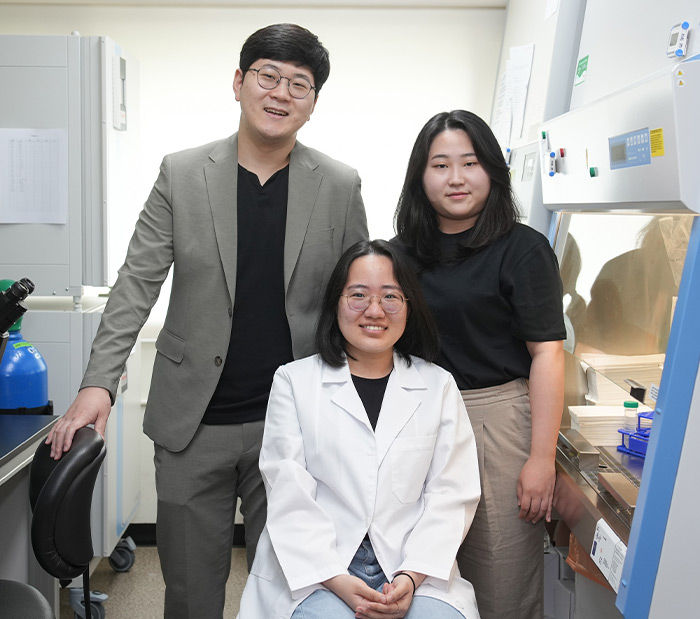Research Stories
A state-of-the-art artificial intelligence model for designing the next-generation gene editing tool called Prime Editor
Published in the prestigious scientific journal "Cell"
Successful identification of the main mechanisms and influences determining the correct efficiency of Prime Edior
A development of an artificial intelligence model to predict efficiency and accuracy
Integrative Biotechnology
Prof.
KIM, HUI-KWON
co-authors Jiyun Kim and Jisung Kim
The research team, led by Professor Hui Kwon Kim from the Department of Integrative Biotechnology, in collaboration with co-authors Jiyun Kim and Jisung Kim, has successfully developed a state-of-the-art artificial intelligence model for designing the next-generation gene editing tool called Prime editor. This groundbreaking work was conducted in partnership with Professor Hyongbum Henry Kim's team from Yonsei University College of Medicine. The research findings were published in the prestigious scientific journal "Cell" on May 11, 2023. This research received support from the National Research Foundation of Korea (2020R1C1C1003284) and the Korea Drug Development Fund (HN22C0571).
CRISPR-Cas9, an artificial enzyme and gene editing tool, allows for targeted cleavage and precise modification of specific genes. It serves as a fundamental technology for gene therapy, genetic modification of plants and animals, and plays a crucial role in genome-wide functional screening. The pioneering scientists responsible for developing gene editing technology using CRISPR-Cas9 were awarded the Nobel Prize in Chemistry in 2020, and this field continues to garner significant attention worldwide.
While gene editing using CRISPR-Cas9 is associated with limitations such as cell toxicity, nonspecific gene corrections, and unintended byproduct generation due to double-strand DNA (DSB) cleavage, a groundbreaking technology known as Prime editing has been developed. This innovative approach allows for the introduction of new genetic information into target DNA sites without the need for DSBs (Anzalone et al., 2019, Nature). The Prime editor system consists of a Prime editor, which is a Cas9 nickase fused with a reverse transcriptase, and a prime editing guide RNA (pegRNA) that plays a crucial role in determining the efficiency of prime editing. This advanced approach is considered significantly safer and more efficient compared to traditional gene editing methods. However, the process of prime editing is complex, and the wide range of options for pegRNA designs presents challenges in its application.
To address these challenges, the research team has generated a dataset on prime editing efficiency induced by over 330,000 pegRNAs over a period of approximately three years, representing the largest dataset in the field. Through systematic analysis of this dataset, the team has successfully identified key factors that determine prime editing efficiencies. Furthermore, they have developed artificial intelligence models, namely DeepPrime, DeepPrime-FT, and DeepPrime off, which enable the prediction of pegRNA efficiency and accuracy by inputting the target DNA sequence and the desired edit. Previously, the utilization of the prime editor required the synthesis and experimental validation of dozens to hundreds of pegRNAs, which was time-consuming and labor-intensive. With these cutting-edge models, researchers can now easily design the optimal pegRNA without the need for wet experiments, facilitating advancements in the field of genome editing.


